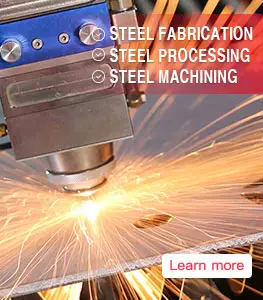Welcome to BBN Steel Materials Factory
S420NL steel yield strength with EN 10025-3

S420NL carbon steel is a low-alloy, high-strength structural steel with a yield strength of approximately 420 MPa (megapascals). EN 10025-3 S420NL steel is commonly used in the construction industry, especially for bridges and buildings, due to its high strength and excellent weldability. S420NL steel is produced according to the European standard EN 10025-3, which covers a range of structural steel grades. The 10025 part of the standard relates to the technical delivery conditions for steel products, while the "3" specifies the specific steel grade.
The chemical composition of S420NL steel typically includes elements such as carbon, manganese, silicon, phosphorus, sulfur, and small amounts of other alloying elements. The exact composition may vary depending on the specific production process and application requirements.
The yield strength of EN10025-3 S420NL carbon structural steel is one of its most important properties. Yield strength is the stress at which a material begins to plastically deform, or yield. This is an important characteristic for structural materials, as it determines how much weight a structure can support before permanent deformation occurs. high-strength steels like S420NL have higher yield strengths than lower-strength steels. This is because the increased strength is typically achieved through a combination of alloying elements, heat treatment, and other processing techniques that increase the material's resistance to deformation. S420NL steel yield strength can vary depending on the specific grade and product form. For example, S420NL steel can be produced as hot-rolled plates, cold-rolled sheets, or even as bar or wire products. Each of these product forms may have different yield strengths, depending on the manufacturing process used.
The yield strength of S420NL steel ranges from approximately 380 MPa to 520 MPa, depending on the specific product form. This range is significantly higher than the yield strength of many other common construction materials, such as concrete (typically around 20 MPa to 40 MPa) or even low-carbon steel (around 250 MPa to 350 MPa).
The high yield strength of S420NL carbon and low-alloy steel can provide several benefits in structural applications. For one, it allows for the use of thinner, lighter-weight structural members, which can reduce material costs and make construction more efficient. Additionally, high-strength steels like S420NL can be used to support heavier loads without requiring additional reinforcing elements, which can simplify and speed up construction.
However, there are also some potential drawbacks to using high-strength steels like S420NL. For one, they can be more difficult to weld than lower-strength steels. This is because the increased strength typically comes from a finer grain structure, which can make the material more prone to cracking during the welding process. Additionally, high-strength steels may be more susceptible to certain types of corrosion, which can lead to premature failure of the structure.
.webp)
.webp)
.webp)
.webp)
.webp)
.webp)
.webp)
.webp)
.webp)



Leave a Message